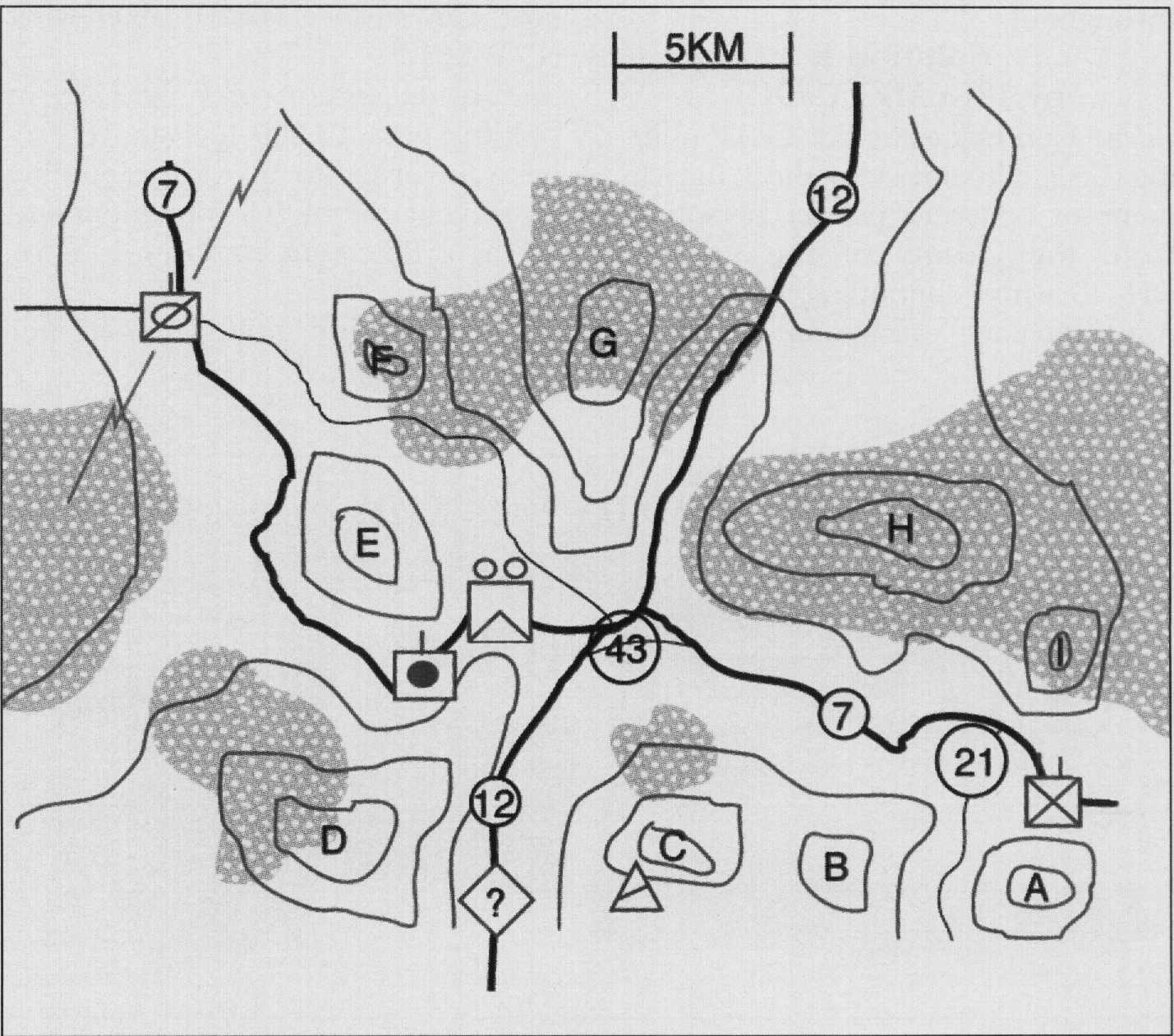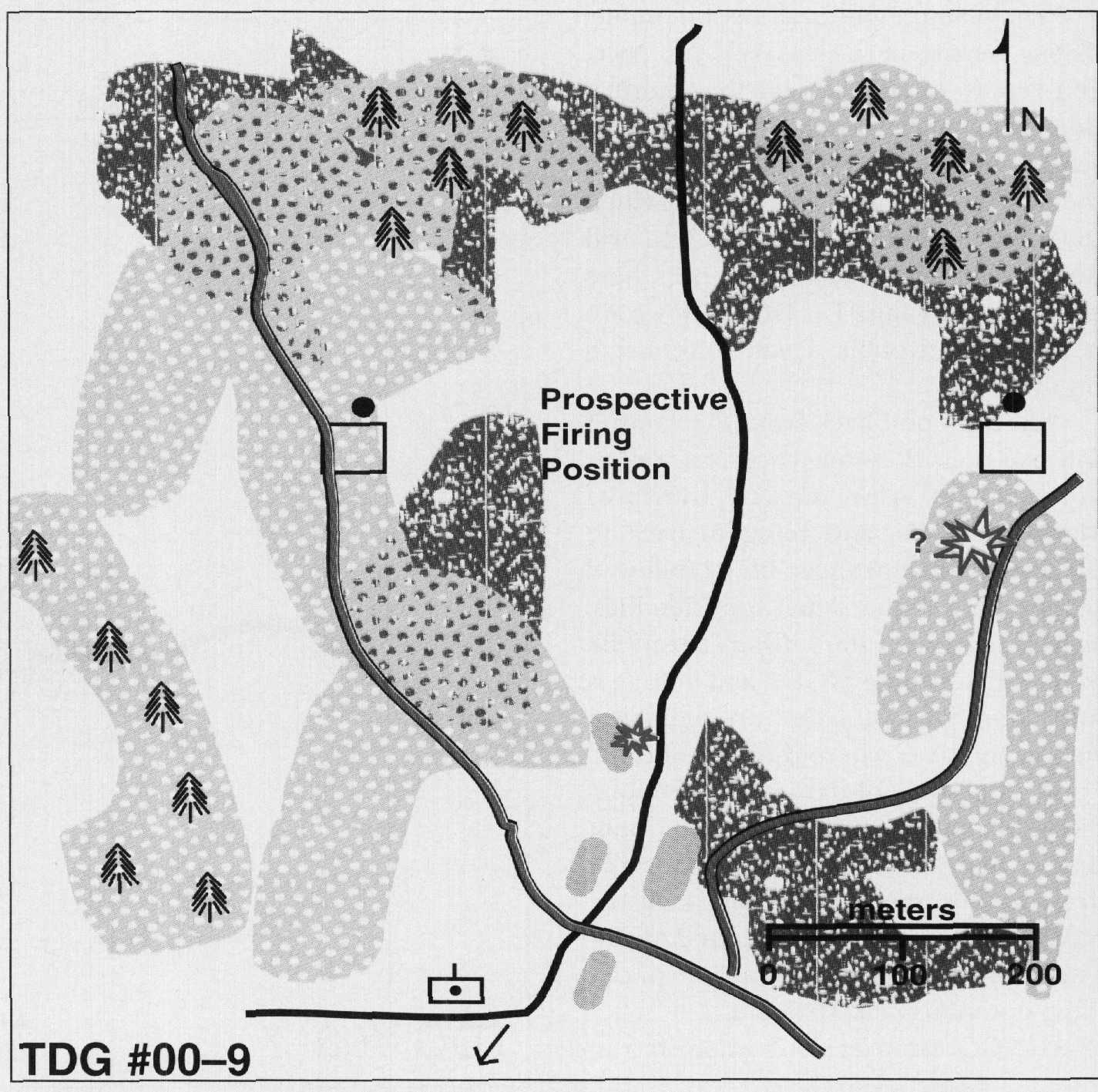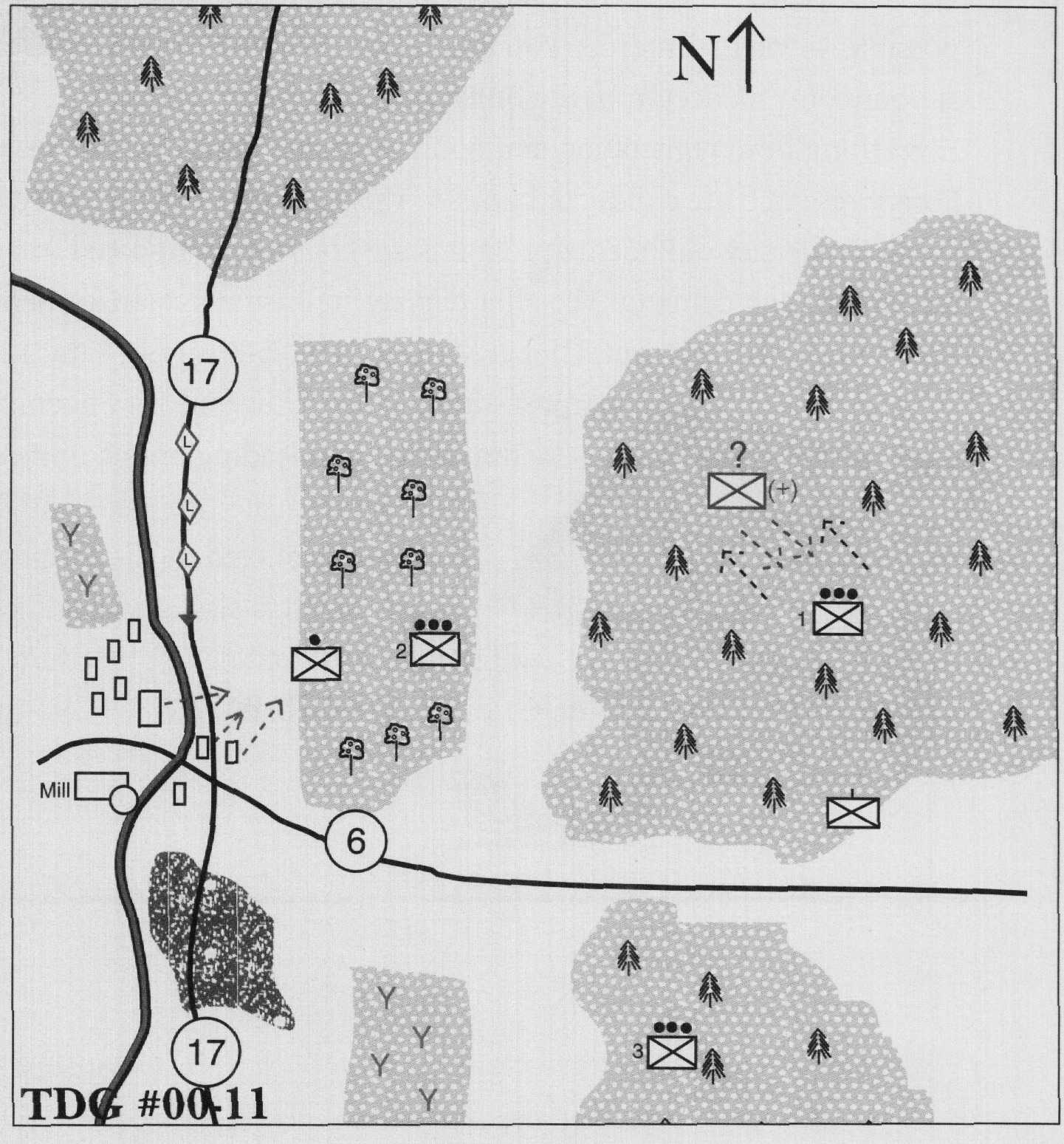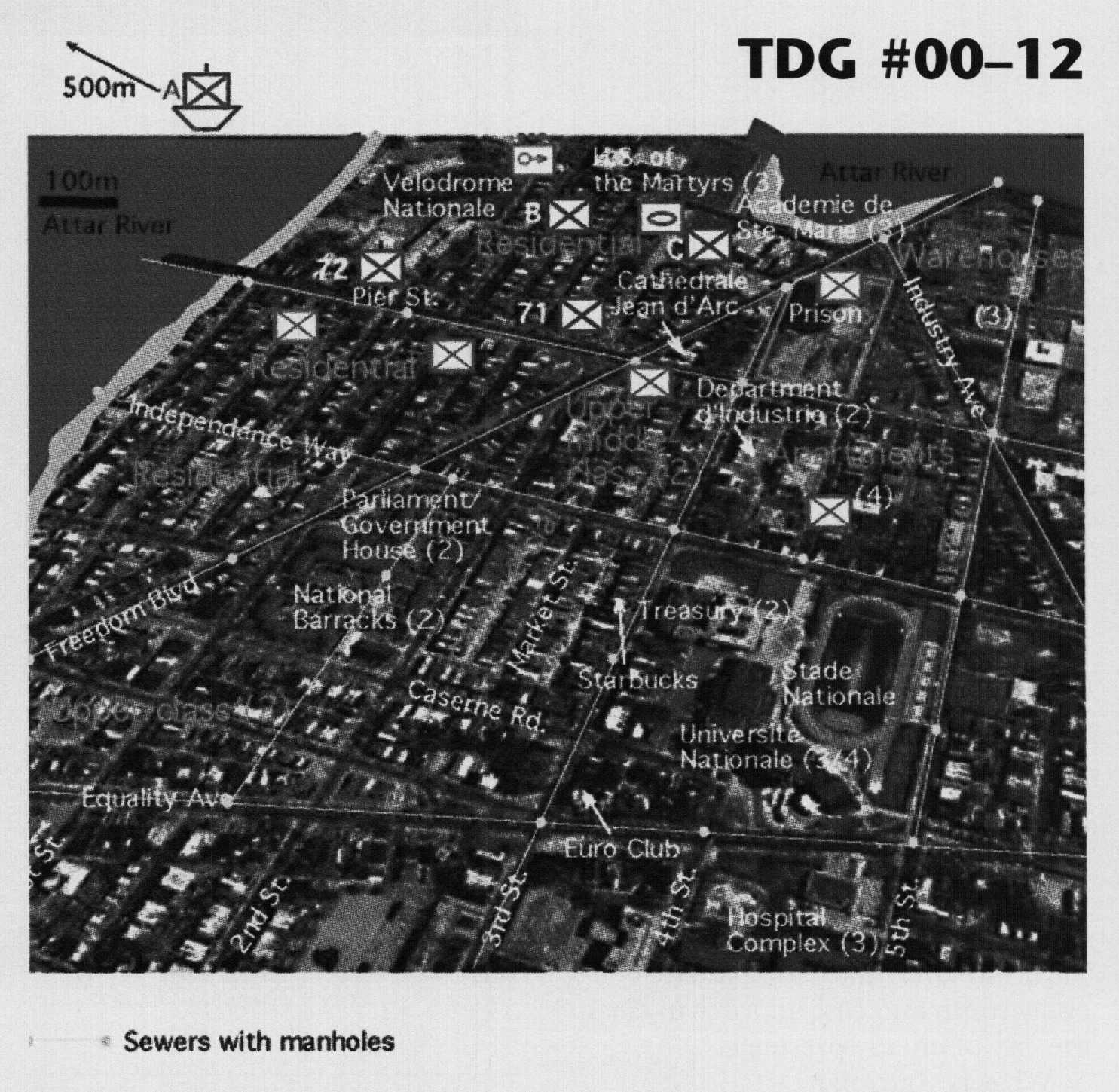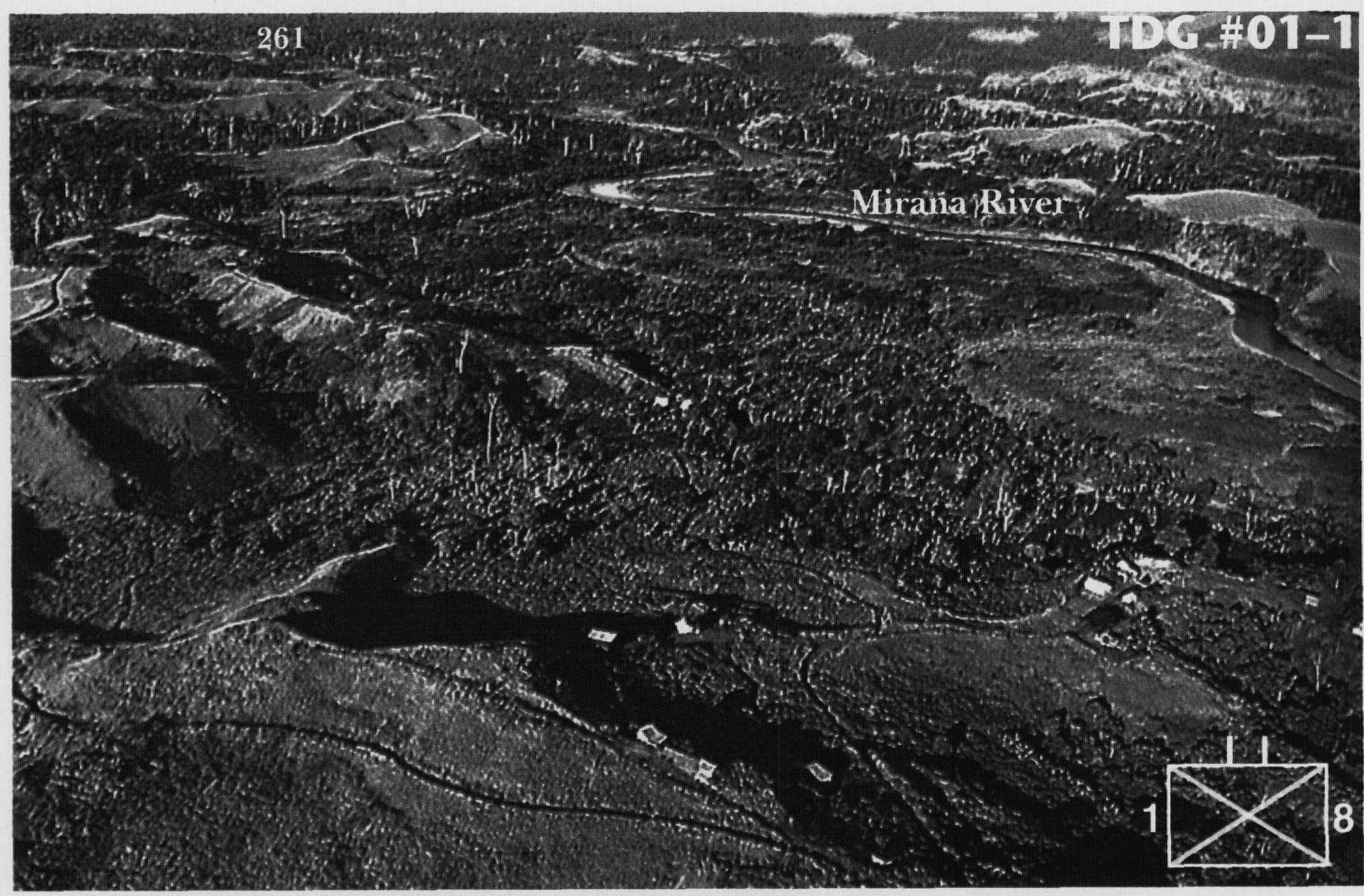Situation
 You are commanding the 1st Rifle Platoon, Company B, 1st Battalion, 3d Marines. In addition to your organic weapons, you have one M240G machinegun team attached and a designated marksman in each squad. Your battalion is currently in Kosovo as part of the Kosovo Force (KFOR) for peacekeeping duty. Your company is billeted in a small village. Your platoon has been assigned to a neighborhood that formerly housed mostly ethnic Serbs. The village is a mix of stone and wood houses many of them damaged. Running through the village is a stream with steep, grassy banks. Your specific orders are to prevent unauthorized ethnic Albanians from crossing to the south of the bridge and entering the Seth section of town, where several dozen Serb families still remain in residence, as well as preventing Serbs, without authorization, from transiting north. The bridge is of stone construction, designed for pedestrians and horse-cart traffic. You have barbed wire obstacles at either end, and at the southern exit is a vehicle control point.
You are commanding the 1st Rifle Platoon, Company B, 1st Battalion, 3d Marines. In addition to your organic weapons, you have one M240G machinegun team attached and a designated marksman in each squad. Your battalion is currently in Kosovo as part of the Kosovo Force (KFOR) for peacekeeping duty. Your company is billeted in a small village. Your platoon has been assigned to a neighborhood that formerly housed mostly ethnic Serbs. The village is a mix of stone and wood houses many of them damaged. Running through the village is a stream with steep, grassy banks. Your specific orders are to prevent unauthorized ethnic Albanians from crossing to the south of the bridge and entering the Seth section of town, where several dozen Serb families still remain in residence, as well as preventing Serbs, without authorization, from transiting north. The bridge is of stone construction, designed for pedestrians and horse-cart traffic. You have barbed wire obstacles at either end, and at the southern exit is a vehicle control point.
It is 1930 hours, a deepening dusky sky overhead. Your command is deployed as follows: 3d Squad, with the M240 team, is in fighting positions just south of the bridge. Three men from 3d Squad man a checkpoint at the northern entrance to the bridge. 2d Squad, along with your command element and two interpreters, are deployed around a partially ruined stone building to the south of 3d’s position. Some 10 minutes ago, Ist Squad began to make its way back to the chow line to the rear, for the only hot meal of the day.
As you wonder what is on tonight’s menu, the checkpoint comes on the net. “Sir, some 50 Albanians, including several women and some men who act drunk, are at the north end of the square heading toward the bridge. Three men and a woman are in the lead. I can make out several AK47s and hunting rifles. Over.”
In the waning light, you scan the lead group with your binoculars. You immediately recognize the face of Shefki Mahti from pictures circulated by the battalion S2. He is an ex-major in the Kosovo Liberation Army who is believed to be running death squads against former Serb leaders and those alleged to have committed crimes over the past months against Albanians and their property. The others are unknown to you. The ex-major is also the darling of the Western press having given several headlinemaking interviews in recent days. Not surprisingly a CNN television crew pulls up in a European style subcompact and rapidly deploys to begin filming the crowd and your positions. Through an interpreter you issue the following warning: “You are approaching a KFOR permit area-one closed at this hour regardless of KFOR permit. Disperse immediately! Do not attempt to cross the bridge!”
With the crowd still advancing, the exmajor through his own bullhorn answers you in English. “We are coming for the Serb bastard who killed my sister’s husband and raped my niece and the daughters and wives of these men. What will you do, kill us all Lieutenant … Calley?” What now Lieutenant?
Requirement
In a time limit of 2 minutes issue any orders/reports you might make. Then provide a sketch of your actions and the rationale behind them. Submit your solution to Marine Corps Gazette, TDG #00-3, P.O. Box 1775, Quantico, VA 22134 or fax 703-630-9147.
>Editor’s Note: If your unit uses TDGs to PrePare “strategic corporals” to handle tough peacekeeping or operations other than war situations, we’d welcome copies to share with our readers. If your unit doesn’t use TDGs this way, it probably should.





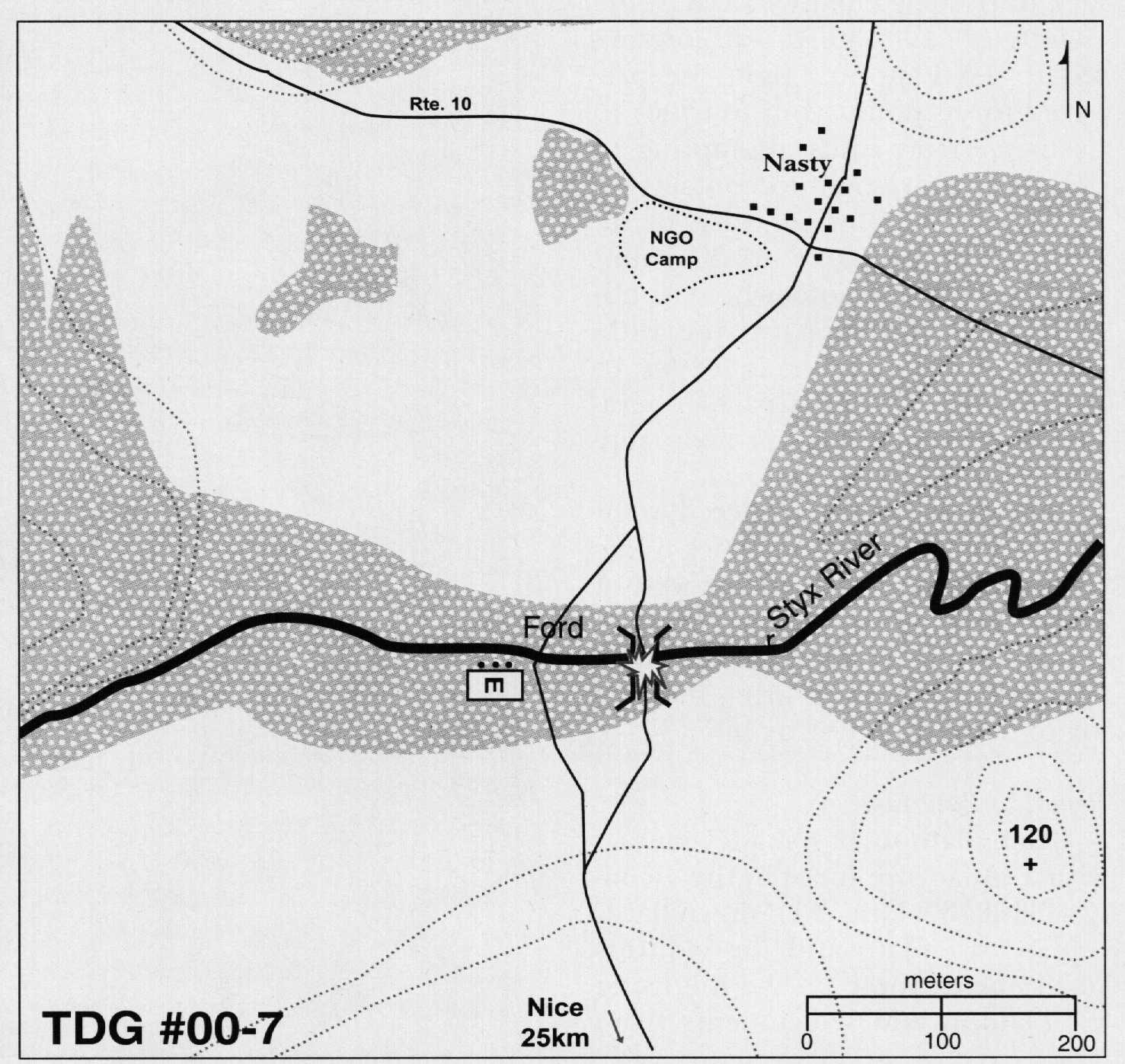
 Requirement
Requirement